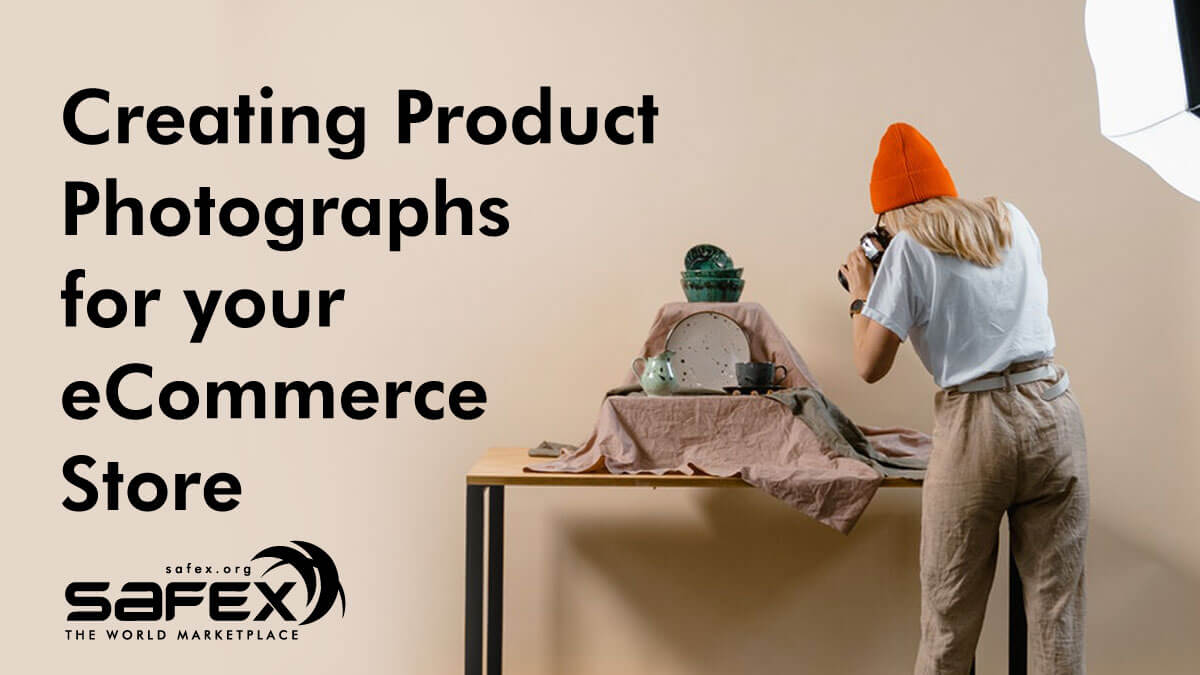What you Need to Know about Creating Product Photographs for your eCommerce Store?
Having high-quality product photographs for your eCommerce store is not negotiable. Therefore, we decided to guide you through the process of making outstanding product photos.

How you present your products has a tremendous impact on how your customers perceive them. In fact, product photographs can often make or break conversions for your eCommerce store. Ask yourself, how many times have you lost interest in purchasing if the product photos were low-quality, blurry or incomplete? That’s precisely why you need to make sure your brand is presented through some high-quality, credible images that will successfully market your eCommerce business. Moreover, if your goal is to attract a younger audience, you should keep in mind that they crave visuals.
People, in general, are becoming more comfortable doing visual research. Because it takes less than a blink of an eye for us to get an impression of what we see, your product photos’ quality is not negotiable. New or small businesses are not omitted from this statement; if your budget is still not big enough to handle a professional photographer, you can step in and do the job. In this article, we’ll show you that you don’t need expensive equipment or impressive technical knowledge to do some outstanding product photography for your eCommerce store. You can do so by following these guidelines:
Plan your shoot
First things first, you need to have an idea of what your products’ photos should look like, based on your:
- Niche - Pay attention to how your competitors display similar products and whether there are some general standards that your audience would expect to see. If there is a certain standard, try to fit it into it while leaving some space for uniqueness.
- Brand - Product photos can often showcase them better than any textual description. You want people to easily recognize your brand just by looking at your product photos. There are many options to choose from, such as action shots, lifestyle pictures, 360 degrees product photography, etc.
- Other product photos - Your products should be presented in an orderly manner. Like you would organize products in an actual store, you should also offer clusters of similar products showcased in similar ways in your eCommerce store. Make sure to use the same lighting, distances, angles, background types, etc., in a collection, if not for a complete catalog.
Create a DIY studio setup
Choosing a dedicated space to build your studio can be helpful in the long run. Building a DIY studio from scratch every time you need to capture your products can be pretty time-consuming. Whatever the case, it’s essential to choose the right place; it doesn’t have to be large, but it does have to be located somewhere near the window or another natural light source. To make your products evenly lit, you’ll need to have a reflector (you can either buy one or use a white foam board). Product placement is essential here since it should be positioned between the reflector and the primary light source for the best results.
Next up, you should choose a suitable background. Simple and neutral colors are always a good choice because they allow you to highlight your product. A white background usually works best for both light and dark products. For instance, you can use a photographer’s sweep, which is essentially a large sheet of paper. A lightbox can be an excellent alternative for smaller products because it’s basically a tiny, compact studio (it even has built-in LED strips). Food product photos are usually taken from above, and they don’t require a lightbox or a sweep.
Lastly, you might need to get a tripod, which allows you to take photos from a fixed spot and achieve that similarity between all your product photos. It also removes blurriness that often comes from a shaky hand taking a picture.
Get familiar with manual camera settings
You don’t need to be a professional photographer to take some high-quality product photos. There are three terms you should get familiar with and subsequently use:
- ISO - The ISO setting essentially controls your camera’s sensitivity to light. A darker place requires a higher ISO setting. However, if you successfully installed your DIY studio with a good light source, your ISO shouldn’t be higher than 400.
- Aperture - Aperture settings are measured in F-stops, and they determine the depth of field of your image (in other words - how much of your photo is in focus). The higher the F-stop number, the lower the aperture, meaning more of your product will be in focus. For example, F-1.0 means a large opening and more light, resulting in a shallow depth of field (a minor part of your picture will be in focus).
- Shutter speed - The shutter speed setting tells you how quickly the shutter opens and closes. If the shutter speed is low, it means the camera’s sensor will be exposed to the light for a longer time. Although this can create a crisp image, it also makes it prone to motion blur. That’s why stillness and stabilization are crucial.
Although combining a high F-stop number with a low shutter speed and the ISO lower than 400 usually works well for most products, you may need to play with your settings until you get the desired picture.
Utilize your smartphone camera
Even though smartphone cameras don’t provide you with the full range of control like a regular camera, you can still take great photos with them. You can even use different apps for manual settings. Whichever the case, here’s what you need to pay attention to when taking product photos with your smartphone:
- Autofocus - You can direct the camera’s focus in the desired direction by tapping the phone’s screen, which helps focus the viewer’s attention on the product in a lifestyle shot. In case your autofocus function doesn’t work correctly, you may need more light to identify the product.
- Flash and Zoom - We recommend you avoid using both flash and zoom functions. The flash will most likely destroy the lighting environment, and zooming in will significantly lower your photo quality.
- Filters - Instead of using social media filters, you can take some time to analyze the filters’ structure and then adjust your manual settings to get the desired image.
Editing Tools
Once you’ve taken some fantastic raw photos, you can upgrade them further by using an editing tool. If you have some editing experience or knowledge, you can use the most popular options, such as Adobe Photoshop or Lightroom. If, on the other hand, you’re looking for some free alternatives, you may want to consider Instasize or Gimp. Lastly, you can also find a professional retouching company and have them improve your images for you (plus, you’d be surprised to know how affordable this option is - you may need to pay 3-5$ per photo for a professional retouch).
Final thoughts
Even though you might feel a bit overwhelmed by everything you need to know about eCommerce product photography, you can turn it into a fun process. Considering all the required steps and doing some research on your competition will allow you to develop some remarkable ideas. That way, you’ll be able to make some signature product photos that your customers will soon know and love.
It’s important to mention that after you upload your high-quality product photos to your eCommerce website, the ownership belongs to the eCommerce platform. On the other hand, using blockchain eCommerce technology, lets you be the owner of all digital properties, including product photos!
